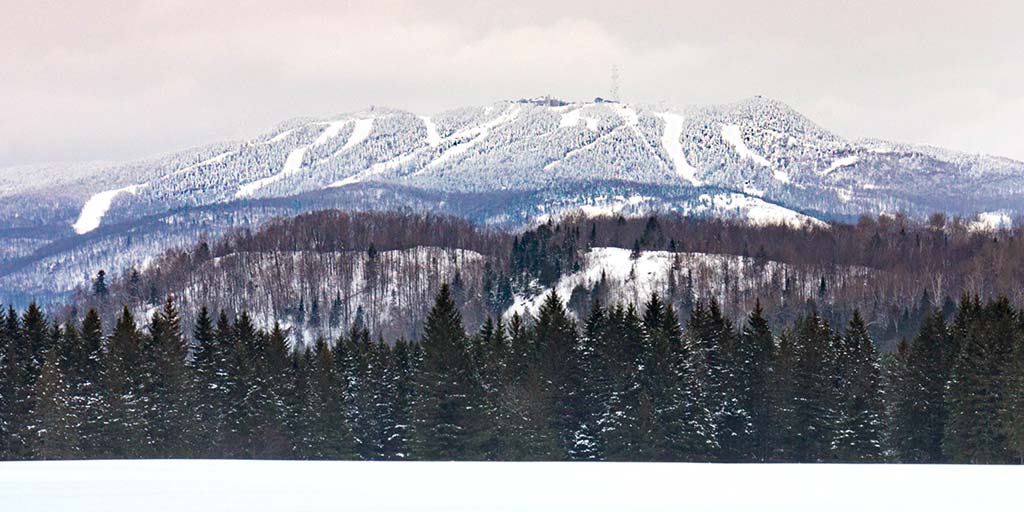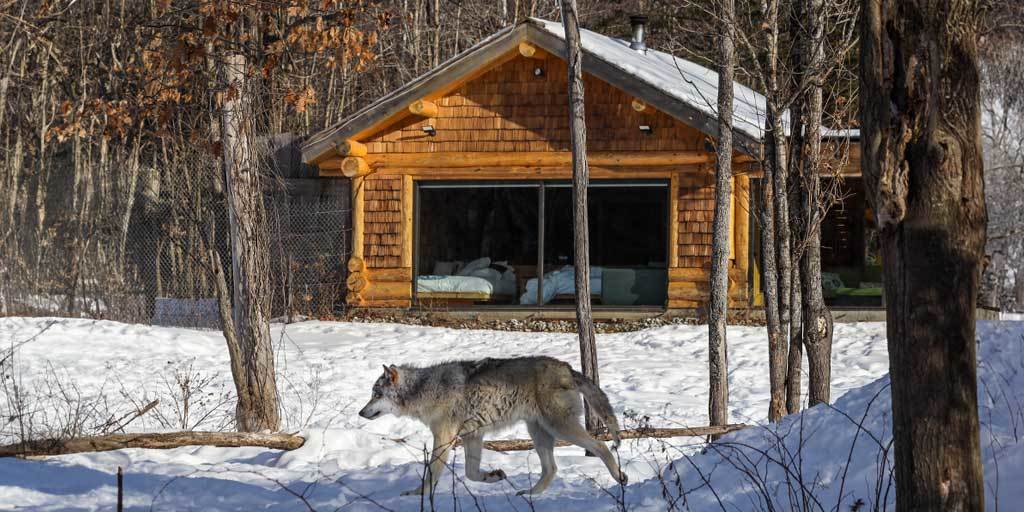Searching for an epic family adventure? Join us on a thrilling Via Ferrata climb in Quebec, combining the best of rock climbing and hiking in the stunning Laurentian mountains.
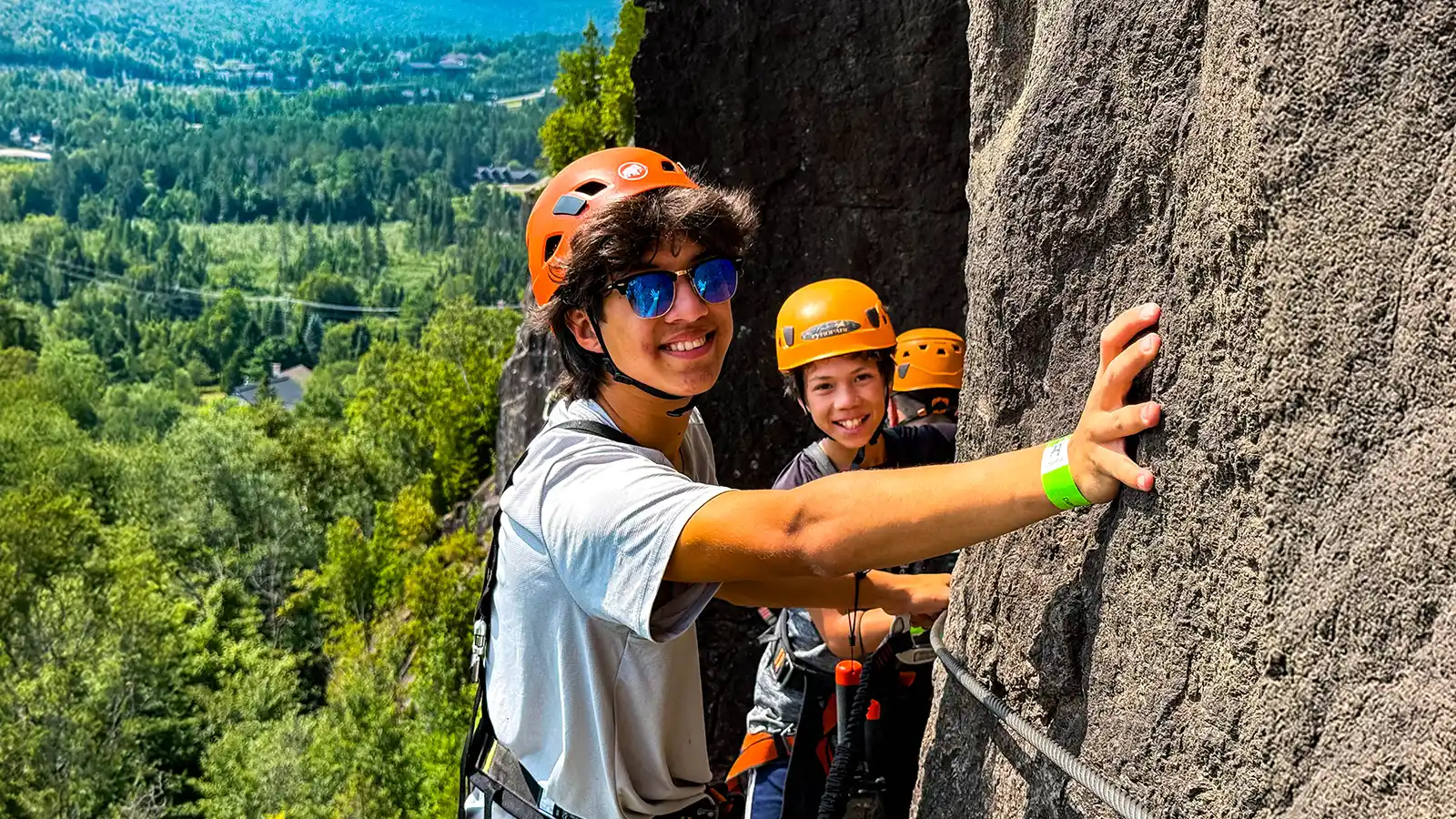
There was nothing between me and my kids but thin air and a small piece of metal about the width of my wrist. In front of me, a sheer rock face, and below me, a drop, hundreds of feet into a grove of trees. I clung tightly to the small grips and looked down at my son Dylan, his light, athletic, eleven-year-old body not showing the same kind of strain that was clearly evident on my own face. His, instead, beamed with a look of joy and intensity that only living on the edge can evoke.
And it’s hard to get more on the edge than on a Via Ferrata.
We were in Sainte-Agathe-des-Monts, in the Laurentians region of Quebec, about one hour north of the city of Laval, and 30 minutes southeast of the popular Tremblant Resort. My family had just left Kingston, Ontario, on an epic road trip that took us through the Bay of Quinte, into the Laurentians, and up through cities like Val-d’Or, Rouyn-Noranda, and Ville-Marie in the Quebec region of Abitibi-Temiscamingue. Hanging from the edge of this cliff, I was starting to wonder if we’d ever make it home.
Just an hour prior, we had arrived in Tyroparc, a mountain adventure park located just outside of town. We’d crushed a proper Quebecois breakfast at Au Petit Poucet, an amazing eatery in nearby Val-David, and fueled on copious amounts of maple syrup, our energy levels were through the roof.
The boys had adventure on their minds, and after I had recently done my first Via Ferrata on an adventure travel tour around Quebec City, I knew that they would love this wild, adrenaline-pumping experience.
So What The Heck Is Via Ferrata?
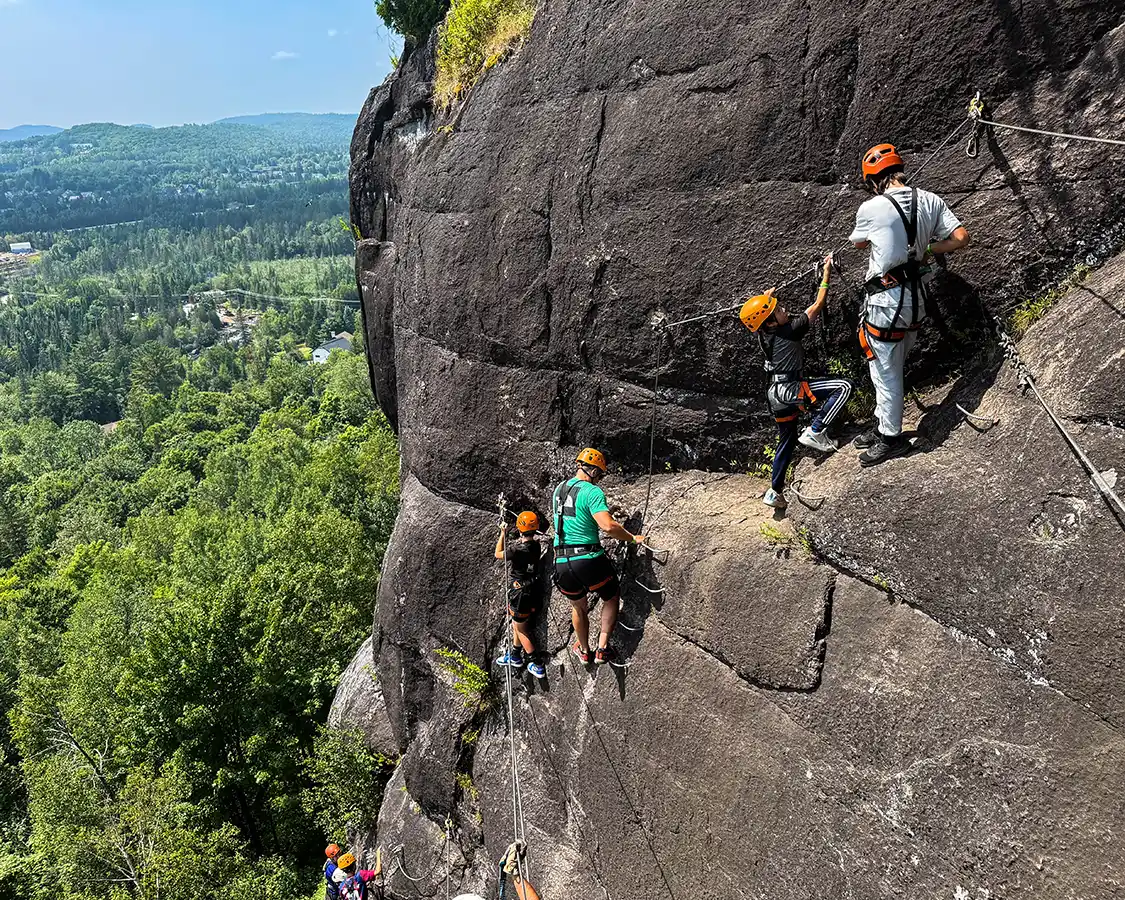
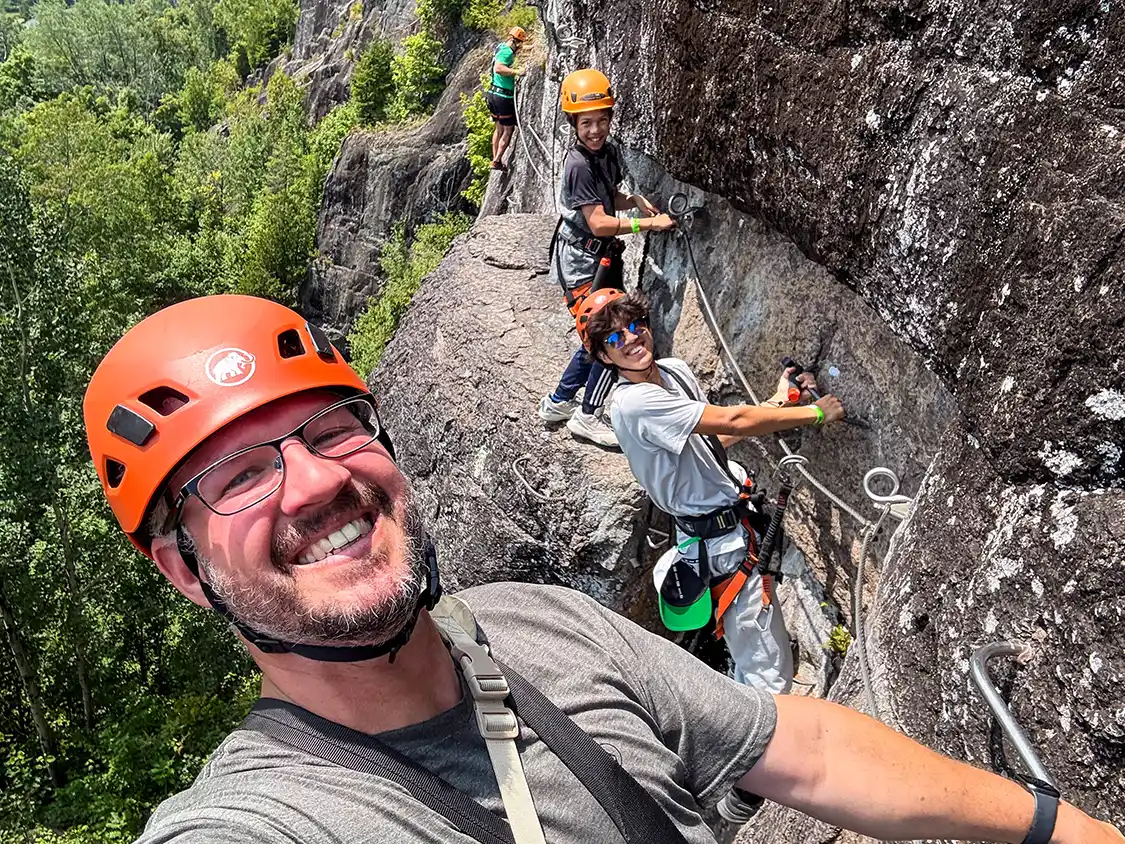
The “Iron Path” is a direct translation from the Italian Via Ferrata. And it’s about as epic a name as the sport itself. Via Ferrata traces its origins back to the craggy peaks of the Italian Dolomites, where it was first developed during World War I in an effort to help soldiers move through the treacherous mountain passes.
These “iron paths,” a series of bolts, cables, ladders, and rungs, were rudimentary systems built to help the troops and supplies move across terrain that was otherwise impassable. Places like steep cliffs, craggy gorges, and tall mountains. What began as a raw, military necessity, though, fueled a spirit of adventure among those who took part, and it grew into one of the world’s most fascinating sports. And along the way, it opened up some of the world’s most breathtaking landscapes to the masses that had once been reserved for only the most elite rock climbers.
It’s this accessibility that has helped Via Ferrata explode in popularity as a family-friendly adventure sport. It bridges the often intimidating gap between a challenging mountain hike and technical rock climbing. The sport gives the thrill of a vertical ascent without the need for extensive training.
The sport uses fixed iron rungs, ladders, and sturdy steel cables that are professionally fixed to a rock face, acting as a secure lifeline and ensuring its accessibility to a wide range of ages and skill levels. There are still many levels of difficulty to the sport, and some Via Ferrata can get absolutely gnarly, but most courses, such as the one at Tyroparc, offer various levels of challenge and expert guides to help those just entering the sport.
It’s an experience that builds confidence and teamwork, and helps kids (and adults) learn that, with a little bravery, we can climb higher than we had ever imagined.
Our Via Ferrata Experience At Tyroparc
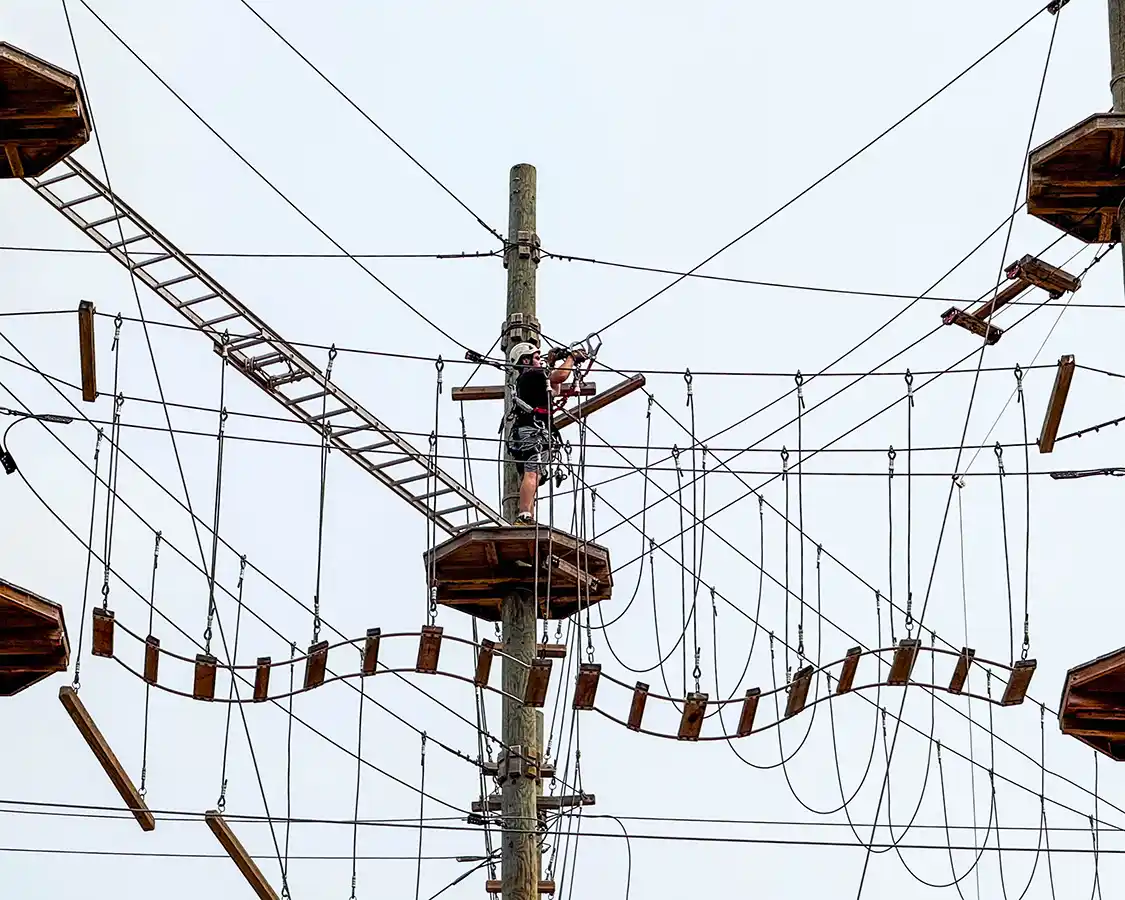
We pulled up to Tyroparc just after lunch. Let me tell you that the parking lot alone is a good introduction to just how wild the landscape is here in the Laurentians and why it’s a perfect place to experience your first Via Ferrata.
Looking up a steep rock face in the parking lot, a massive tree-top style adventure course was perched. The boys watched as a small group of teenagers navigated a series of ziplines, ropes, ladders, and cables around the course.
Right at the base was a series of ladders and bolts drilled into a small rock face. Both Dylan and Cohen turned to me and asked, “Is that the epic course you were telling us about?” Sensing their skepticism, I told them to keep looking up, past the treetop walk, and tell me what they saw. And as they raised their heads to the sky, past a line of dense trees that make up the wilds of the Boreal Forest, past a massive zipline (the third longest in Canada), they saw it.
There, hanging on the side of the mountain, were a series of adventurers on their very own Via Ferrata. And the boy’s look of skepticism quickly turned to a mild panic.
Safety First
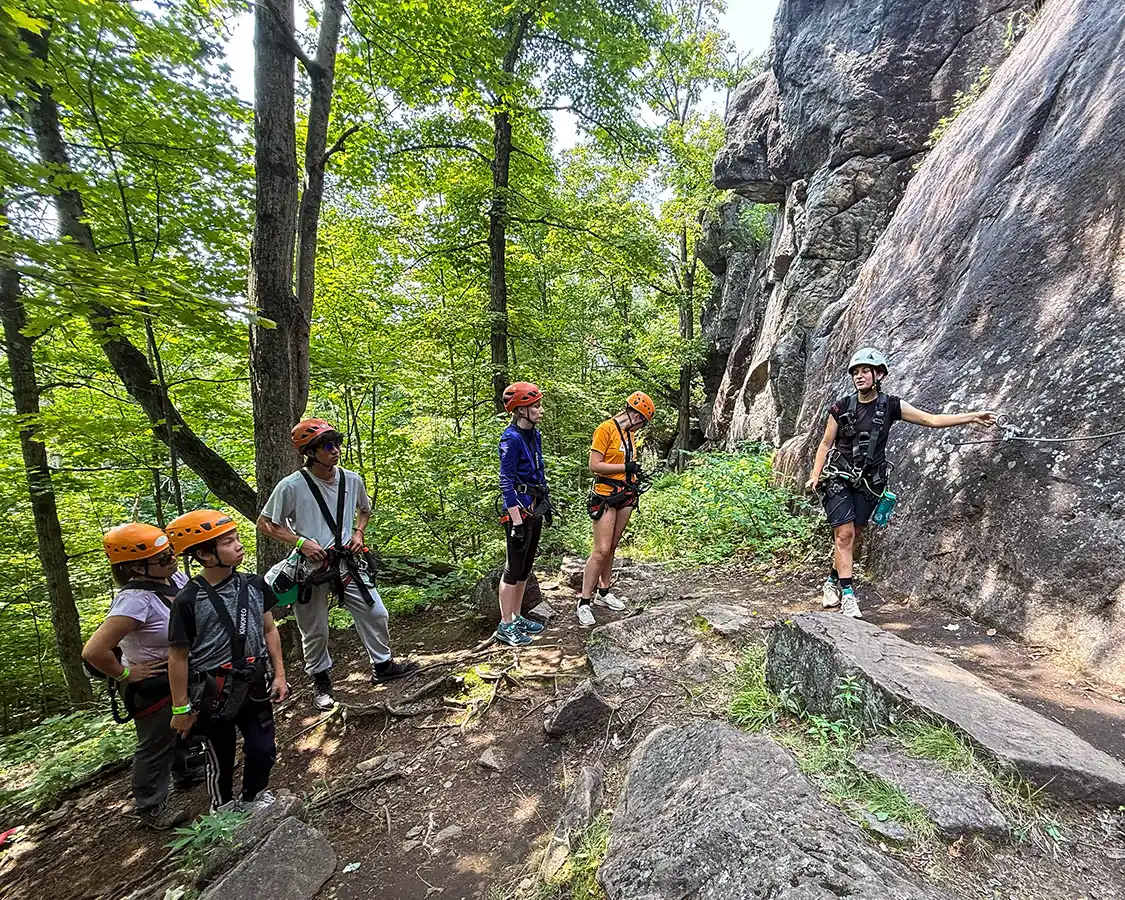
We got ourselves registered at the main building. To be honest, our biggest worry wasn’t the Via Ferrata itself, but whether Dylan would be able to take part at all. The experience has a strict weight minimum of 88 lbs. Luckily, that weight includes the harness and support carabiners, and helmet, so all in, he hit 89.5 lbs!
We were put with a group of about 10 people, mostly families who came from Quebec City, Vermont, and Ontario. Everyone was geared up in harnesses, climbing helmets, and had their shoes checked to ensure that they were appropriate (closed-toed with a good tread), and then we began a steep walk up toward the base of the cliff.
Once there, we were given a thorough lesson on the dos and don’ts of Via Ferrata, such as remaining clipped into the safety lines, and using a second anchor if we needed to take a break and “hang around a while.”
The safety features of Via Ferrata can vary as much as the landscape that they’re mounted on. On the one that I undertook in Quebec City at Vallee Bras du Nord, climbers were required to use two carabiners at all times to stay connected, while the one at Tyroparc uses an innovative “Elephant Tail” hook that allows a single carabiner to go through nearly the entire course without ever having to disconnect it from the safety line.
Up, Across, Down, and Up Again
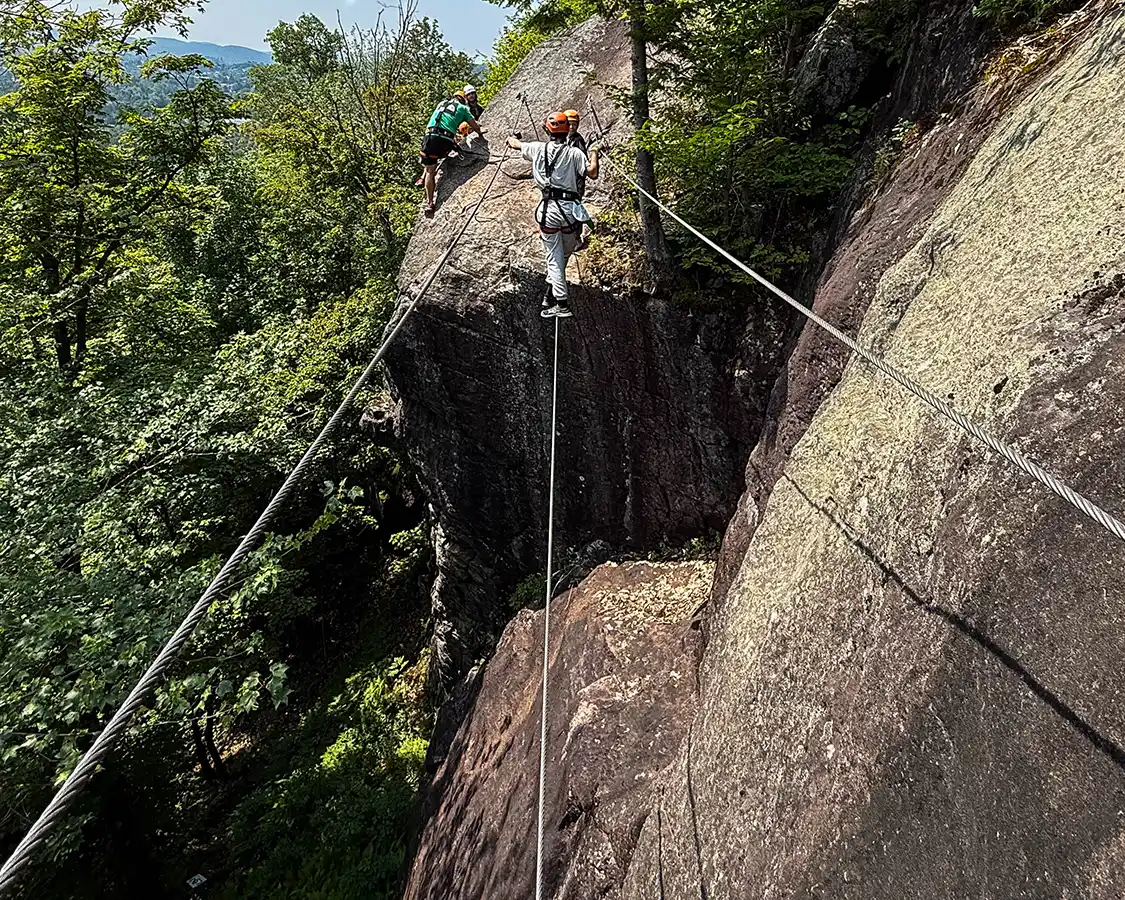
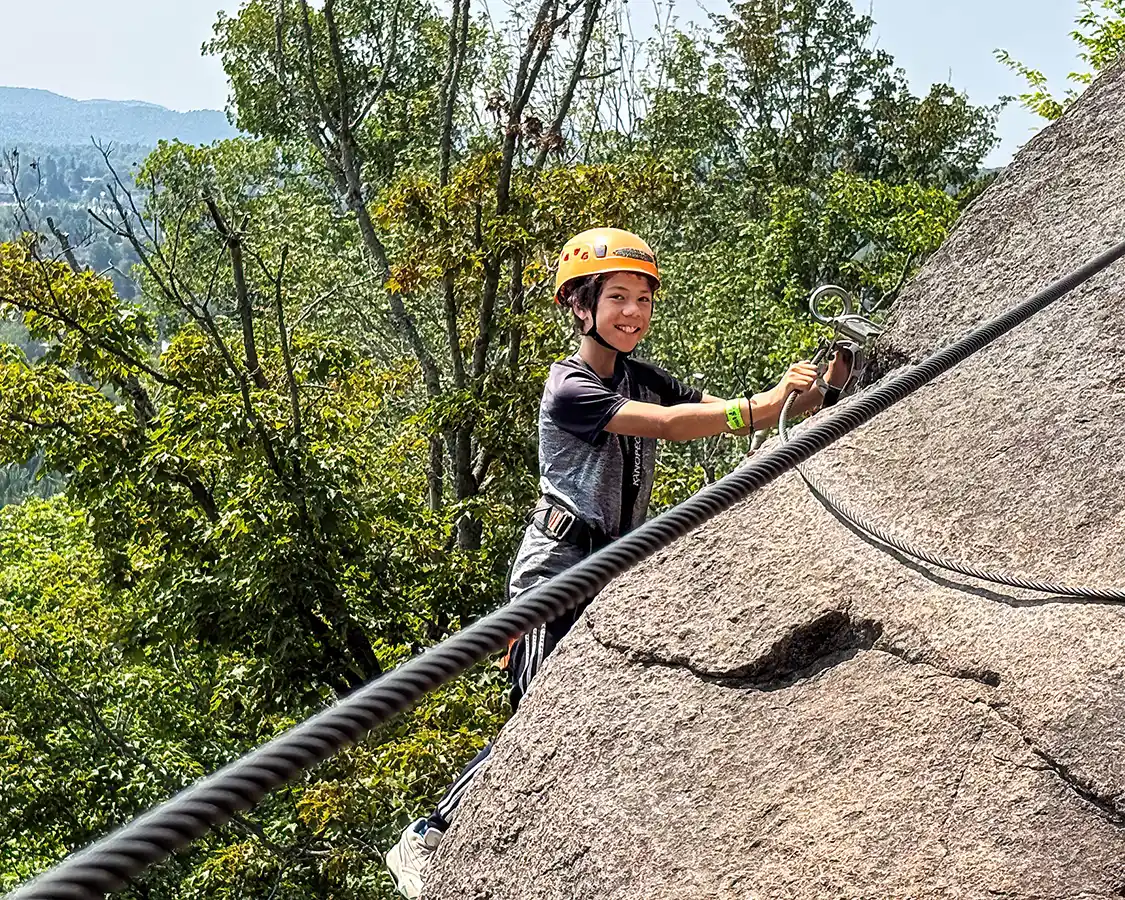
Via Ferrata isn’t so much about climbing through cliffs and mountains as it is about traversing the surface. Rather than a relatively straight-up path in rock climbing, we started on a ladder and then traversed across the cliff face of Mont Catherine, using a combination of pegs, ladders, and cable bridges to navigate the space.
The boys, nervous at first, quickly settled into the rhythm. And when our guide gave the opportunity to test out the safety of the lines holding them to the mountain, they, quite literally, jumped at the chance. They dropped their feet out from under them and hung from the support cables, confident that no harm would come to them.
I, on the other hand, settled into my hang time a little more cautiously.
Our route took us up, across, down, and up again, but never in the same way twice. It was a creative selection of routes that kept us from getting anywhere near bored or complacent along the route. And as we progressed across the face of Mont Catherine, our confidence in ourselves and each other increased with each obstacle.
Soon, I lost any hesitancy in the boys choosing their own route and focused on getting myself across the same obstacles in a totally unique way. It was a blast, and we were laughing and challenging each other further as the two-hour experience wore on.
Some areas of the climb made us all stop and catch our breath. Not because of physical exertion (although there was plenty of that), but because of the scenery that was unfolding before us. As we climbed higher, it seemed like the entire Laurentian region could be seen from that mountainside. The forests, mountains, lakes, and rivers that make this one of the most beautiful places in Canada were presenting themselves as a reward for our hard work.
And as we reached the top and drank in the views together, arm in arm, we knew that this wouldn’t be our last time either in the Laurentians or on a Via Ferrata.
And Way Down We Go
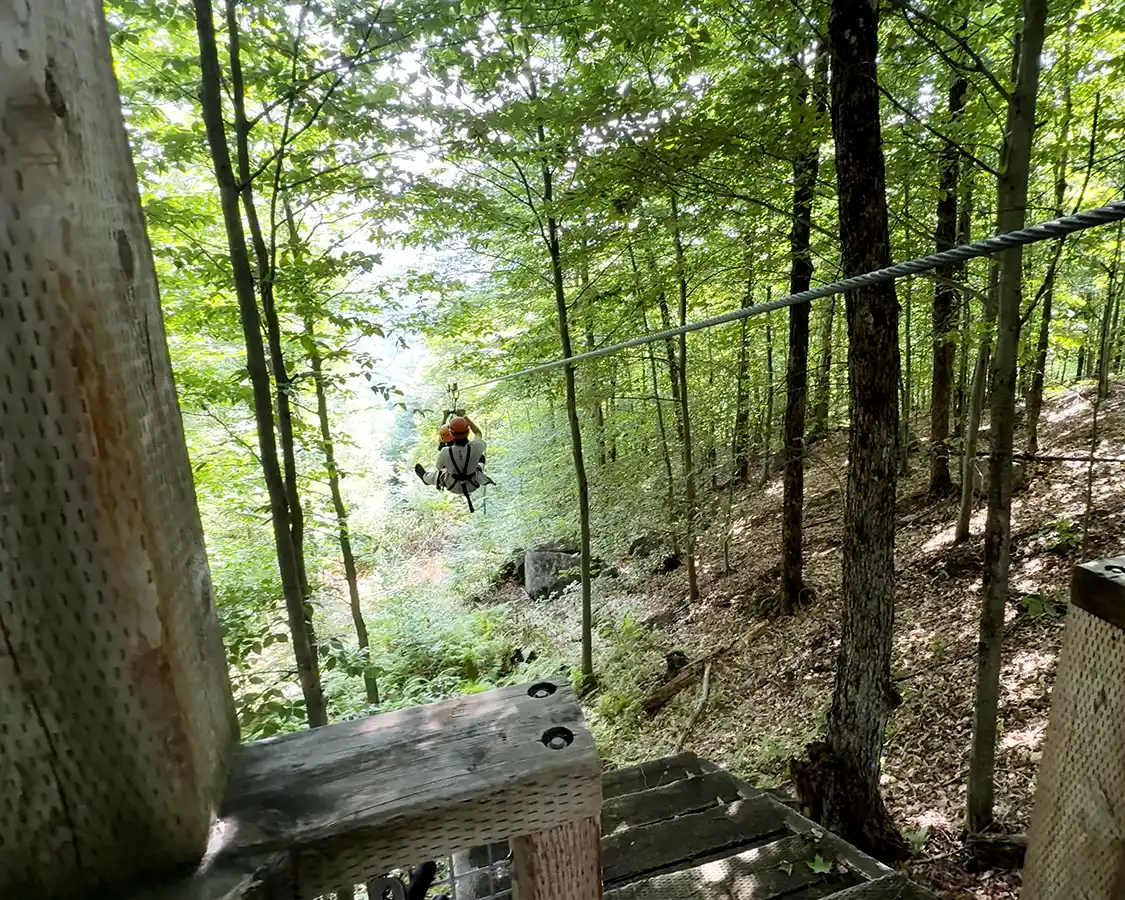
Now, just because we had reached the top of the Tyroparc Via Ferrata did not mean that our adventure was finished. There are several packages of climbs available, and the one that we chose just happened to include two ziplines that make the journey down Mont Catherine significantly faster (and more exciting) than walking.
And one of these ziplines just happens to be a 900-meter behemoth that currently stands as the third-longest zipline in Canada.
We’re no strangers to ziplines. We’ve enjoyed them back home in Ontario and around the world. In fact, Dylan might still hold the record for being the youngest person to tackle the epic zipline at Ugong Rock in the Philippines when he was just two years old.
But this zipline was something else. Once we launched, it felt like we were flying over the trees for hours. At least until the end of the line approached at lightning speed, and we had to brace for a sudden and dramatic stop at the bottom.
The views from the zipline were nearly as dramatic as those on the cliff itself. And at times it seemed like we were flying through the air with nothing around us but the views. Honestly,the entrance would have been worth it for this alone.
Will We Do A Via Ferrata Again?
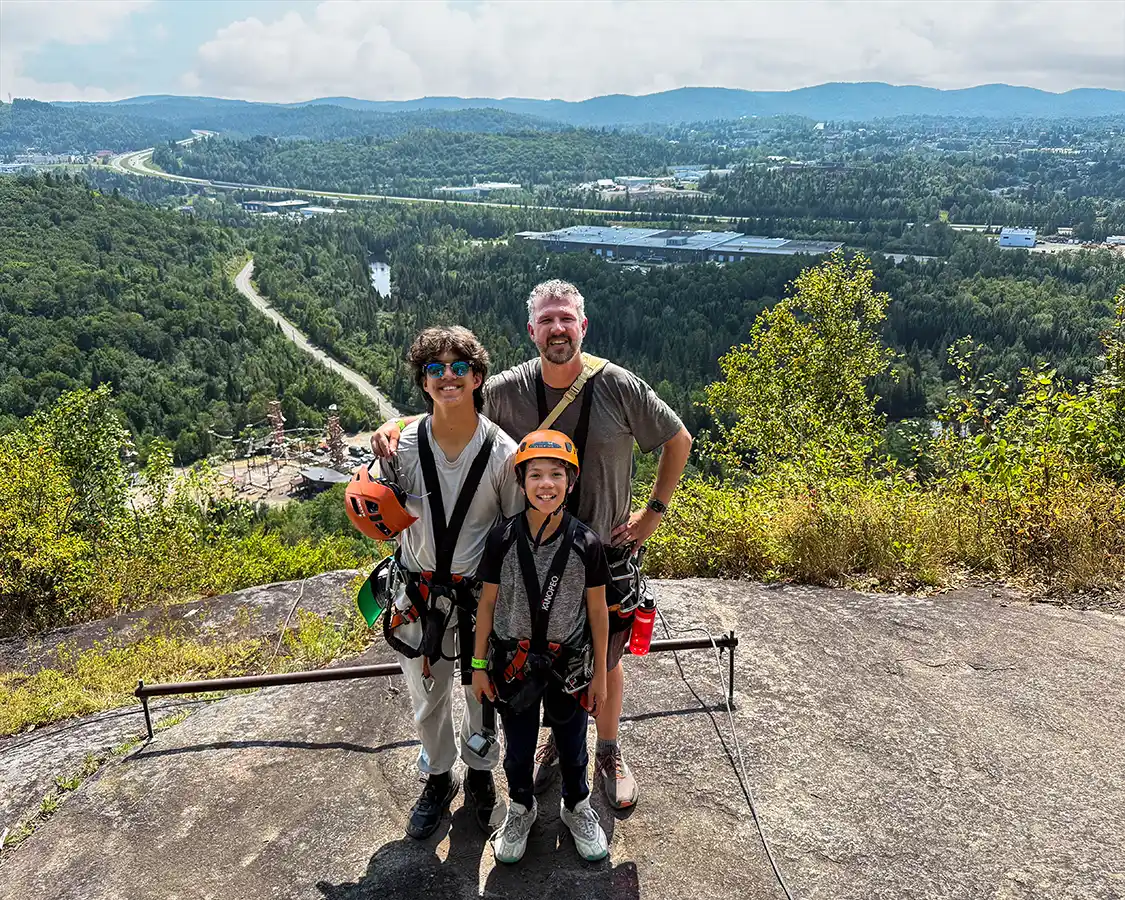
I’m going to guess that, from the title of this story, you know the answer to this question. We loved the Via Ferrata experience at Tyroparc. To be honest, it was even better and more epic than the one I did near Quebec City. And now Via Ferrata is on my radar in all of our travel plans.
This isn’t the only one in Quebec that you can experience. There are many throughout the province worth checking out, including:
- Via Ferrata du Diable in Mont-Tremblant National Park
- Parc Aventures Cap Jaseux and Parc National du Fjord-du-Saguenay in Saguenay-Lac-St. Jean
- Aventurex and Montmorency Falls near Quebec City
And let’s not forget that a Via Ferrata typically only takes a couple of hours. So with that extra time on your hands, you can take in some of the other amazing things to do in the Laurentians, such as Tremblant Resort (which, conveniently, has its own Via Ferrata), Fly Fishing, Hiking, or checking out the La Haute acrobatics show at Sentiers des cimes in Mont-Blanc. So make sure you save some energy for some of the other exciting attractions nearby.
Disclosure: Our visit to Tyroparc and the Laurentians was done with the support of Tourisme Tourism Laurentians. All opinions remain my own.
You May Also Like To Read:

